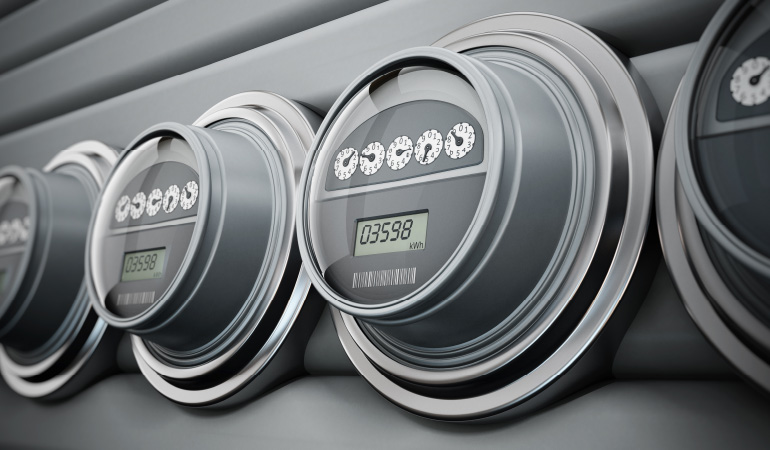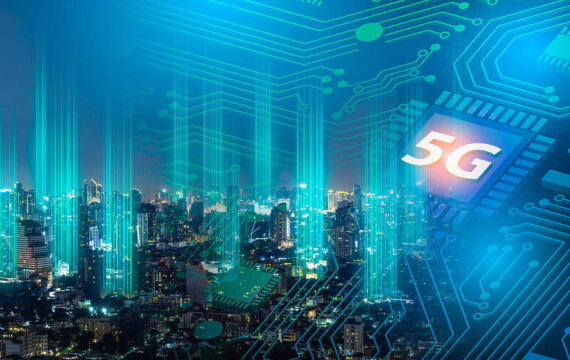Energy load and cost forecasting are two of the most complicated parts of budgeting and forecasting for both energy consumers and utility companies. However, thanks to IoT, optimizing smart grid operations is becoming much easier.
Now, energy providers can rely on various energy demand forecasting methods to better manage electricity usage. At the same time, they can provide consumers with data-based suggestions on how to buy and use electricity smarter.
Are you planning on streamlining your energy budgeting and forecasting process and getting hold of accurate data? Read on to learn how you can leverage automated forecasting software and energy consumption management solutions to predict energy demand and reduce costs for your enterprise.
Smart metering infrastructure and its role in forecasting energy loads

Efficiency and accuracy are the most critical aspects of power system operation when it comes to forecasting energy loads. This is when Advanced Metering Infrastructure (AMI), one of the enabling components of the smart grid, becomes very useful.
An integrated system of smart meters, AMI makes real-time communication between consumers and control centers more straightforward.
The main task of Automatic Meter Reading (AMR) systems is to gather energy consumption data and send it to a utility company. Apart from that, the AMR system collects valuable information that can be analyzed and returned to the consumer. Since weather conditions change, energy prices increase, and supply and demand fluctuate, load forecasting is essential.
There are three categories of load forecasting. Each has a specific role and suits different operations to help predict load flows and prevent overloading.
- Short-term load forecasting (STLF) (for up to one day) is applied for scheduling and analyzing distribution networks.
- Medium-term load forecasting (MTLF) (for one day to one year) is used for planning power production resources and tariffs.
- Long-term load forecasting (LTLF) (for one to ten years) is applied for managing resources and investments in development.
Advanced metering infrastructure aligns with regulations that require utilities to give exact information on customers so facility managers can monitor electricity consumption. If you want consumers to be able to regulate how much electricity they use, monthly or bi-monthly reports aren’t enough. That’s why smart metering energy infrastructure is so important.
So what is the most efficient way to determine electricity usage? Without a doubt, it’s installing smart meters at each point of consumption. Not only does this help to track electricity usage, it’s also a must-have element for energy demand forecasting.
Energy demand forecasting methods
Power distribution systems require accurate forecasting of costs and demand. However, due to various external factors like climate, time, demographics, and socioeconomic factors, that’s quite tricky. Moreover, resources are running out, emissions are increasing, and renewable energy is far from being applied globally.
Forecasting methods can be categorized into two major categories:
- Causal
- Historical data-based
Causal forecasting methods reflect the cause and effect between energy consumption (as the output) and various input variables (economic, social, and climate factors.) The most common causal forecasting methods include Artificial Neural Networks (ANNs) and regression models.
An Artificial Neural Network is considered a data-driven approach to forecasting. An ANN uses data to forecast output values by capturing the relationships between input and output variables.
Regression models create forecasts by calculating the value of a dependent variable based on independent variables.
Historical data-based forecasting methods consider previous values of a variable to forecast its future values. Among these methods, Time series, Grey prediction, and autoregressive models are the most prominent.
Time series forecasting models are used to predict future values of a variable based on earlier observed values. Time series models show the relationship between a variable’s values over time.
Grey prediction is used in energy demand forecasting when there’s a need to deal with sparse data or low data numbers. This method is much more accurate than others.
Autoregressive models are mostly used to forecast peak load energy demand.
Considering that energy consumption data creates time series, some inputs like humidity and temperature are used in short-term forecasting to show the most accurate data. Socioeconomic input variables (e.g. GNP) and population are used in long-term forecasting.
Tips for better energy budgeting and forecasting

No one likes forecasting season, because it always comes with a few additional problems. Not only do you have to predict everything accurately, you also need to convince stakeholders and your management team to approve the energy budget.
Since utility bills are at almost every corner of every organization, it’s quite challenging to handle energy spending. That’s why energy managers have started to rely on advanced tech like AI in energy industry, using energy budgeting and forecasting software to save time and get access to more accurate predictions.
Here’s how you can leverage energy intelligence software to simplify the budgeting and forecasting process.
#1 Know your data
Data is king, so you should know everything about it, especially when it comes to your enterprise. Before jumping into the forecasting turmoil, make sure you’ve dotted your i’s and crossed your t’s. Once you’ve defined what level of information you need, it makes it much easier to choose the right ways of collecting data.
#2 Ensure your budget’s accuracy
Whether or not you anticipate it, your energy budget will get some skeptical or negative feedback from stakeholders. Of course, they would like to spend as little as possible, so your task is to prove the accuracy of the forecast and the significance of the historical data that you used to create the energy budget. Thankfully, energy intelligence software can help you out and even provide you with use/cost vs budget reports (see the image below.)
#3 Understand the process
While you can get many advantages from automated energy budgeting and energy forecasting software, it’s critical to understand how the whole process works so you can take more data-proven steps and use the best methods to create a comprehensive budget plan. It’s not possible to forecast everything, but the more you know about the processes in your company, the better you’ll be at managing your utility expenses.
#4 Make data-driven decisions
Any time you have to defend your energy budget or explain your energy forecast, rely on data from intelligence software. People trust data and believe in numbers. So no more coming up with intriguing pitches. All you have to do is let the data speak for you. Plus, if you don’t want your decisions to be criticized, base them on historical operational data. At the end of the day, it’s you who needs to defend and explain your steps, so a little help will never hurt.
#5 Incentivize
One of the perks of energy forecasting software is that you can use it to incentivize your employees to regulate their energy use and provide them with more sustainable solutions. Since this software gives you access to valuable data to accurately predict future energy usage, try to leverage it to make the world a better place to live. Plus, you can encourage others to care about their energy consumption with the engaging energy gamification solutions and show how they can contribute to balancing it.
Final thoughts
Automated forecasting software enables both energy providers and consumers to predict energy loads and costs based on vital historical data. Apart from that, it lets enterprises regulate energy consumption and make data-driven decisions towards a more sustainable future. Although it’s almost impossible to predict energy usage with 100% accuracy, energy budgeting and forecasting software makes the process much more straightforward.
Reach our energy management software development experts if you want to improve your budgeting and forecasting by implementing energy intelligence software.


